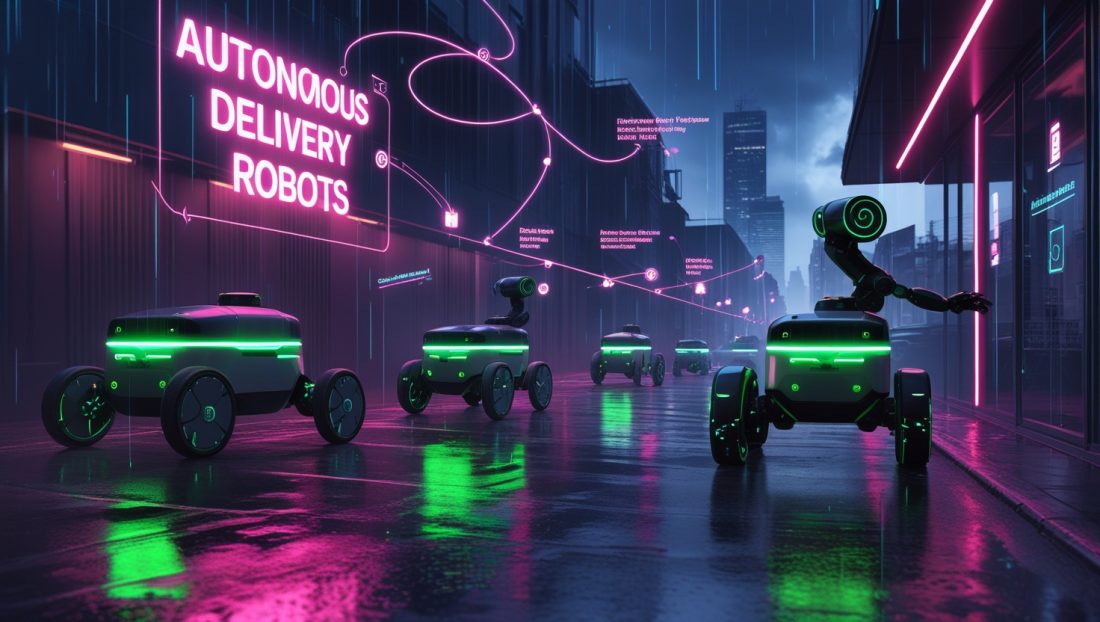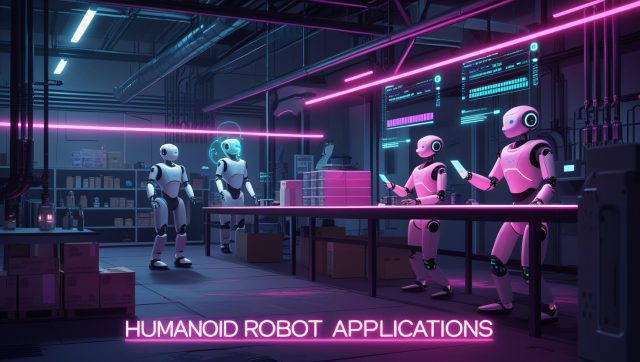What if your next package could navigate stairs, rubble, and crowded streets without human intervention? In 2025, this vision is becoming reality thanks to Switzerland’s pioneering autonomous delivery robots. Developed by Zurich-based RIVR (formerly Swiss-Mile), the LEVA robot exemplifies a seismic shift in logistics—one that merges agility, efficiency, and sustainability. This article dives deep into the technology, applications, and ethical implications of these robots, offering a comprehensive look at how they’re redefining global supply chains. To explore AI’s broader implications, see how the dark side of AI threatens our future with advanced technologies.
The Evolution of Last-Mile Delivery: Why Autonomous Robots Matter
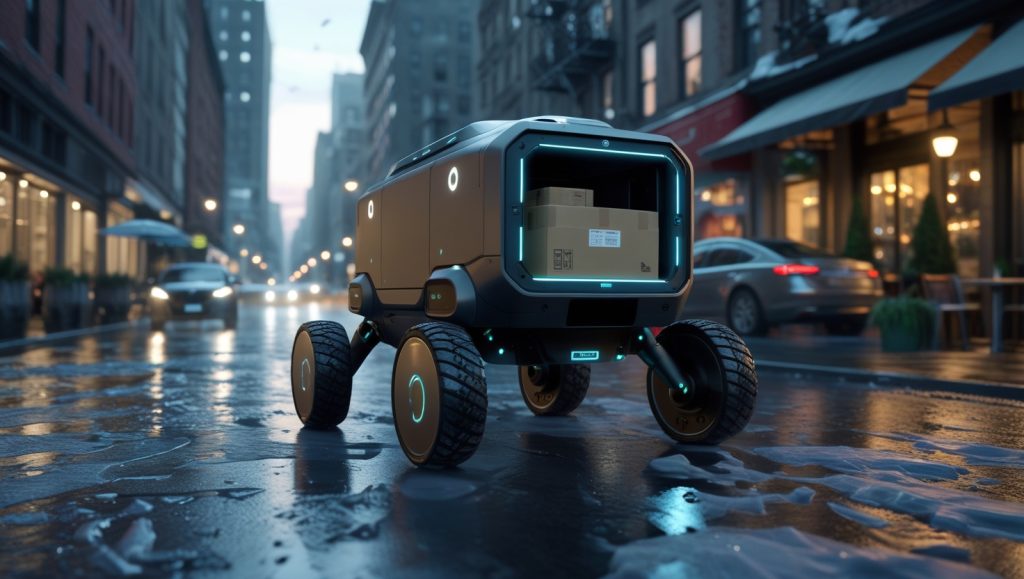
Bridging the Last-Mile Gap with Autonomous Delivery Robots
The “last mile” accounts for over 50% of total delivery costs, according to a 2024 McKinsey report. Traditional solutions—gas-powered vans, drones, and wheeled robots—struggle with urban complexity. Enter autonomous delivery robots like LEVA. Combining legs for adaptability and wheels for speed, they address inefficiencies that have plagued logistics for decades. For a look at related delivery tech challenges, check out why drone delivery networks face similar obstacles in urban environments.
Marko Bjelonic, CEO of RIVR, explains:
“We’re not just automating deliveries—we’re reimagining mobility. LEVA’s hybrid design allows it to operate in environments where even humans face challenges, from icy sidewalks to disaster zones.”
Hybrid Mobility: A Technical Masterstroke
LEVA’s legged-wheeled system isn’t a mere novelty. Its technical specs reveal why it’s a game-changer:
- Speed & Range: Rolls at 14 mph on pavements (10x faster than legged-only robots).
- Payload Capacity: Transports 85 kg Euro-cargo boxes, equivalent to 200 standard parcels.
- Energy Efficiency: A 58V battery supports 5-hour operations, reducing reliance on frequent charging.
Unlike drones, which face regulatory and battery-life hurdles, or ground-only robots limited to flat terrain, LEVA’s versatility positions it as a universal solution. For a closer look at RIVR’s innovative wheeled-legged design, see Core77’s coverage of LEVA’s cargo-handling capabilities.
Technical Breakthroughs Powering the Robot Revolution
AI-Driven Navigation for Autonomous Delivery Robots: Beyond Pre-Programmed Routes
LEVA’s navigation relies on sensor fusion—integrating LiDAR, 5 onboard cameras, and inertial measurement units (IMUs). This allows real-time mapping of dynamic environments. For example, during a 2024 pilot in Bern, LEVA successfully navigated a construction site altered daily, learning new pathways autonomously. To see how AI drives breakthroughs in other fields, explore why AI in judicial decisions is sparking transformative innovations.
The Role of Foundation Models in Autonomous Delivery Robots
RIVR collaborates with ETH Zurich to integrate AI “foundation models” akin to GPT-4. These models enable robots to generalize tasks—like identifying unstable terrain—without task-specific training. A 2025 Nature Robotics study highlights this as a critical step toward scalable autonomy. For insights on AI transparency, read why explainable AI (XAI) is crucial for trustworthy autonomous systems.
Energy Efficiency and Sustainability in Autonomous Delivery Robots
LEVA’s electric design reduces carbon emissions by 92% compared to diesel vans, per RIVR’s lifecycle analysis. Future iterations aim to integrate solar-charging panels, aligning with the EU’s 2030 carbon-neutrality goals.
Real-World Applications: From Urban Deliveries to Disaster Relief
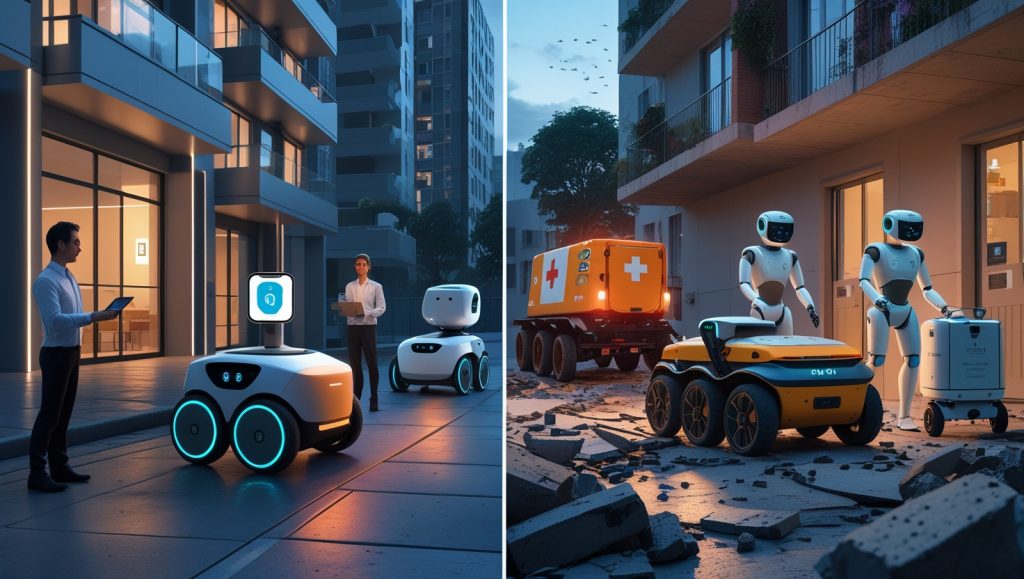
Case Study: Evri’s 2025 Barnsley Pilot with Autonomous Delivery Robots
UK courier Evri’s trial with autonomous delivery robots yielded transformative results:
- 30% faster deliveries in multi-story apartments.
- Zero thefts due to biometric cargo locks.
- Enhanced accessibility for disabled customers, with robots waiting up to 10 minutes for doorstep retrieval.
Marcus Hunter, Evri’s CTO, emphasizes collaboration:
“Couriers now oversee multiple robots via tablets, focusing on customer interaction rather than stair climbs.”
Disaster Response: Lifesaving Innovation by Autonomous Delivery Robots
In March 2025, autonomous delivery robots delivered antibiotics through a collapsed hospital in Zagreb after an earthquake. Their ability to traverse rubble saved critical time, showcasing potential beyond commercial logistics. For more on AI in crises, see why AI in disaster response leverages similar innovative solutions.
Retail and Healthcare Expansion Using Autonomous Delivery Robots
- Migros (Switzerland’s largest retailer) plans to deploy 500 autonomous delivery robots for grocery deliveries by 2026.
- Zurich University Hospital is testing LEVA for overnight medical supply transport, reducing staff workload.
Industry Impact: Competition and Strategic Investments
Amazon’s Strategic Stake in RIVR’s Autonomous Delivery Robots
Jeff Bezos’ $20M investment through the Amazon Industrial Innovation Fund signals confidence in LEVA’s scalability. Analysts speculate that Amazon Prime could slash costs by 40% using robot fleets deployed from autonomous trucks. For a look at autonomous tech challenges, explore why self-driving cars’ hidden flaws reveal limitations in similar systems.
Global Players Compete with Autonomous Delivery Robots
- China’s Unitree: The Go2-W robot undercuts LEVA’s price by 60% but carries only 30 kg.
- Sweden’s IntuiCell: Partnering with NVIDIA to develop AI that “learns like a puppy,” though still in R&D.
Regulatory Landscape
The EU’s 2025 Autonomous Delivery Vehicle Act mandates strict safety protocols, including emergency stop buttons and liability insurance—hurdles for cheaper, less-regulated competitors.
Ethical and Societal Considerations
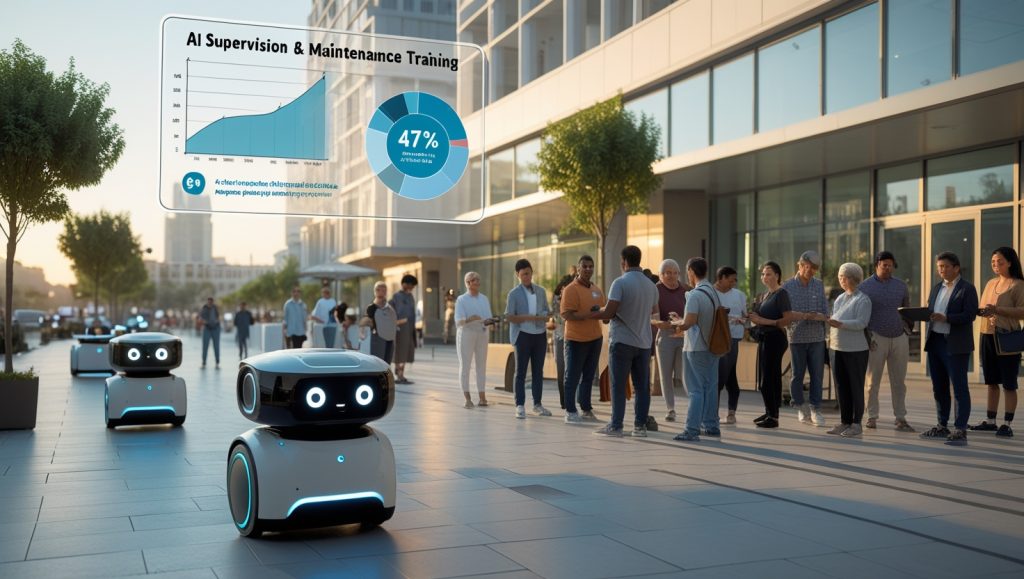
Job Displacement vs. Creation with Autonomous Delivery Robots
While critics warn of courier job losses, RIVR estimates its autonomous delivery robots will create 12,000 new roles in maintenance and AI supervision by 2030. Switzerland’s VDI Association advocates for reskilling programs to ease transitions. For a deeper dive into AI’s societal impact, read why AI ethics could save or sink us in the face of automation.
Public Perception: Trust and Transparency
A 2025 Eurobarometer survey found 47% of Europeans distrust autonomous delivery robots for deliveries. To address this, RIVR hosts public demo days and equips LEVA with friendly audio cues like, “Your package has arrived!” To understand public skepticism toward robotics, see why humanoid robots creep us out and their unsettling realism.
The Road Ahead: Predictions for 2030
Global Deployment
RIVR aims to deploy 1 million autonomous delivery robots across healthcare, retail, and disaster response.
AI Advancements
Integration of quantum computing for real-time decision-making. For a glimpse at AI’s future applications, check out why AI-powered podcast translation is breaking language barriers globally.
Sustainability
Solar-powered charging stations at urban hubs.
FAQ: Answering Your Top Questions
How much do autonomous delivery robots cost?
LEVA’s current model costs $45,000, but prices are projected to drop to $20,000 by 2027 as production scales.
Are these robots safe around pedestrians?
Yes. LEVA uses 360° sensors to maintain a 2-meter distance from humans, complying with EU safety standards.
Can they operate in extreme weather?
Tested in -20°C (Swiss Alps) and 40°C (Dubai), LEVA performs reliably, though heavy snow requires manual assistance
Will robots replace human workers?
No—they’re designed to handle repetitive tasks, allowing humans to focus on complex logistics and customer service.
Embracing a Smarter Logistics Future
Switzerland’s autonomous delivery robots are more than a technological marvel—they’re a blueprint for sustainable, efficient supply chains. As industries worldwide grapple with labor shortages and climate goals, innovations like LEVA offer a path forward.
Your next step
Stay ahead of the logistics revolution! Subscribe to our newsletter for exclusive updates on robotics and AI advancements.
